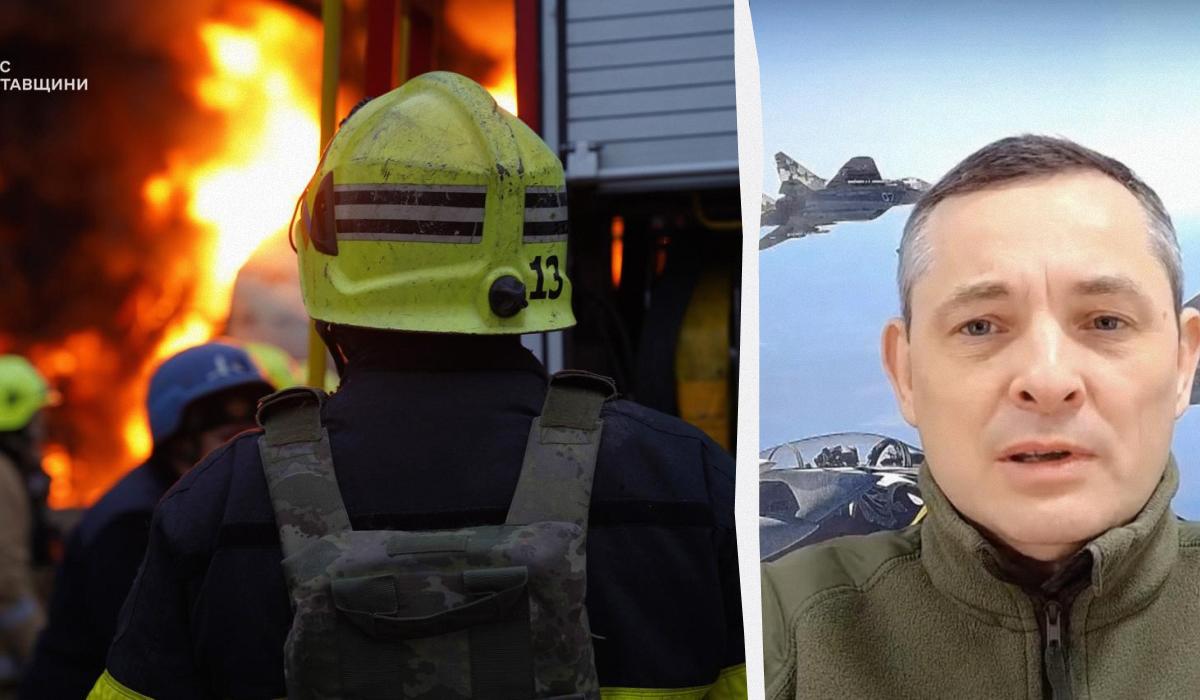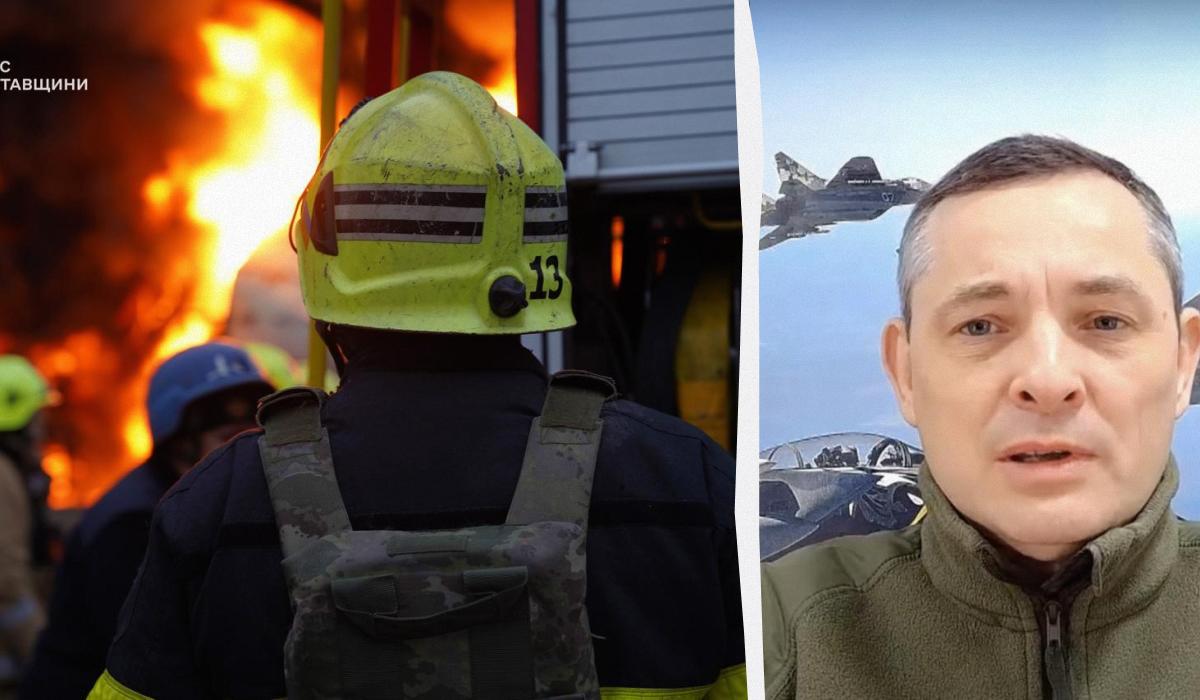“The enemy is modernizing its drones and it is more difficult to “plant” them, the representative of the Air Force noted.”, — write: www.unian.ua
The enemy is modernizing its drones and it is more difficult to “plant” them, the representative of the Air Force noted.
 Ignat told what was special about today’s attack of the Russian Federation / UNIAN collage, photo of the State Emergency Service, screenshotThe peculiarity of today’s Russian attack on Ukraine is that, in addition to 320 attack UAVs of the “Shakhed” and “Gerber” type, 36 missiles were used, primarily 28 ballistic ones.
Ignat told what was special about today’s attack of the Russian Federation / UNIAN collage, photo of the State Emergency Service, screenshotThe peculiarity of today’s Russian attack on Ukraine is that, in addition to 320 attack UAVs of the “Shakhed” and “Gerber” type, 36 missiles were used, primarily 28 ballistic ones.
Yuriy Ignat, the head of the communications department of the Air Force Command, told about this on the air of the telethon.
“It is clear that these missiles can be shot down only by those systems that work against them – “Patriot”. The question of their presence is open,” he said.
Ignat notes that in Ukraine today there is “zonal and object cover”. According to him, Patriot systems work ballistically in a radius of about 25 km.
“To cover the city and the objects in it, several batteries are needed to avoid getting hit from different directions, because the Patriots are technically created in such a way that they look at a certain angle,” he added.
The head of the communications department of the Air Force Command notes that many Russian drones do not achieve their goals due to the work of EW. According to him, the enemy is modernizing drones, making them more resistant to the electronic warfare system, so more means are needed to suppress modernized options.
Ignat said that in addition to 200 Shaheds, the enemy also used Gerbers, which are quite dangerous – their size is up to 2 meters and they carry 5 or more kilograms of explosives.
He noted that today’s attack by the enemy is aimed at energy, gas production sites, distribution stations.
“They demonstrated their intentions – to deprive us of energy and heat in our homes in the autumn-winter period. They have done this before,” Ignat said.
As of 10:00 a.m., the Air Force reported that on the night of October 16, the enemy launched a combined attack on Ukraine’s energy infrastructure using attack UAVs, air-launched and ground-based missiles. In total, the radio-technical forces of the Air Force detected and escorted 357 air attack devices – 37 missiles (28 of them “ballistic”) and 320 UAVs of various types.
It was noted that UAVs of the Shahed, Gerbera type (unmanned aerial vehicles of other types) were flying from the directions of Kursk, Millerovo, Shatalovo, Oryol, Primorsko-Akhtarsk – RF, about 200 of them were “Shahedy”.
The enemy also attacked with 2 Kh-47M2 “Kinjal” aeroballistic missiles, 26 Iskander-M/KN-23 ballistic missiles, 2 Iskander-K cruise missiles, 7 Kh-59 guided air missiles.
It was reported that 288 air targets were shot down/suppressed by anti-aircraft defense:
- 283 enemy UAVs of the Shahed, Gerbera type (unmanned aerial vehicles of other types);
- 5 Kh-59 guided air missiles.
In addition (as of 10:00 a.m.), 18 enemy missiles have been lost in location, the information is being clarified.
Direct hits of 14 missiles and 37 strike UAVs were recorded at 14 locations, and debris (debris) fell at 2 locations. The main direction of the attack is Poltava region and Kharkiv region.
Attack on Ukraine on October 16As UNIAN reported, on the night of October 16, Russia struck, in particular, the Poltava region. DTEK Naftogaz gas production facilities were attacked.
The energy company reported that at night the enemy again attacked the energy infrastructure with drones and missiles.
Volodymyr Kogut, acting head of the Poltava Regional Military Administration, added that oil and gas industry facilities were damaged as a result of both falling debris and direct hits.
You may also be interested in news:
- After an attack by drones on an electrical substation in the Volgograd region, the light went out
- “Excuse me, sit down”: the veteran spoke about solving the problems of the SZH in Ukraine
- The SSO again struck the Saratov oil refinery
